AnyDesk review
Our AnyDesk review finds the remote desktop software both affordable and easy-to-use for individuals and small businesses
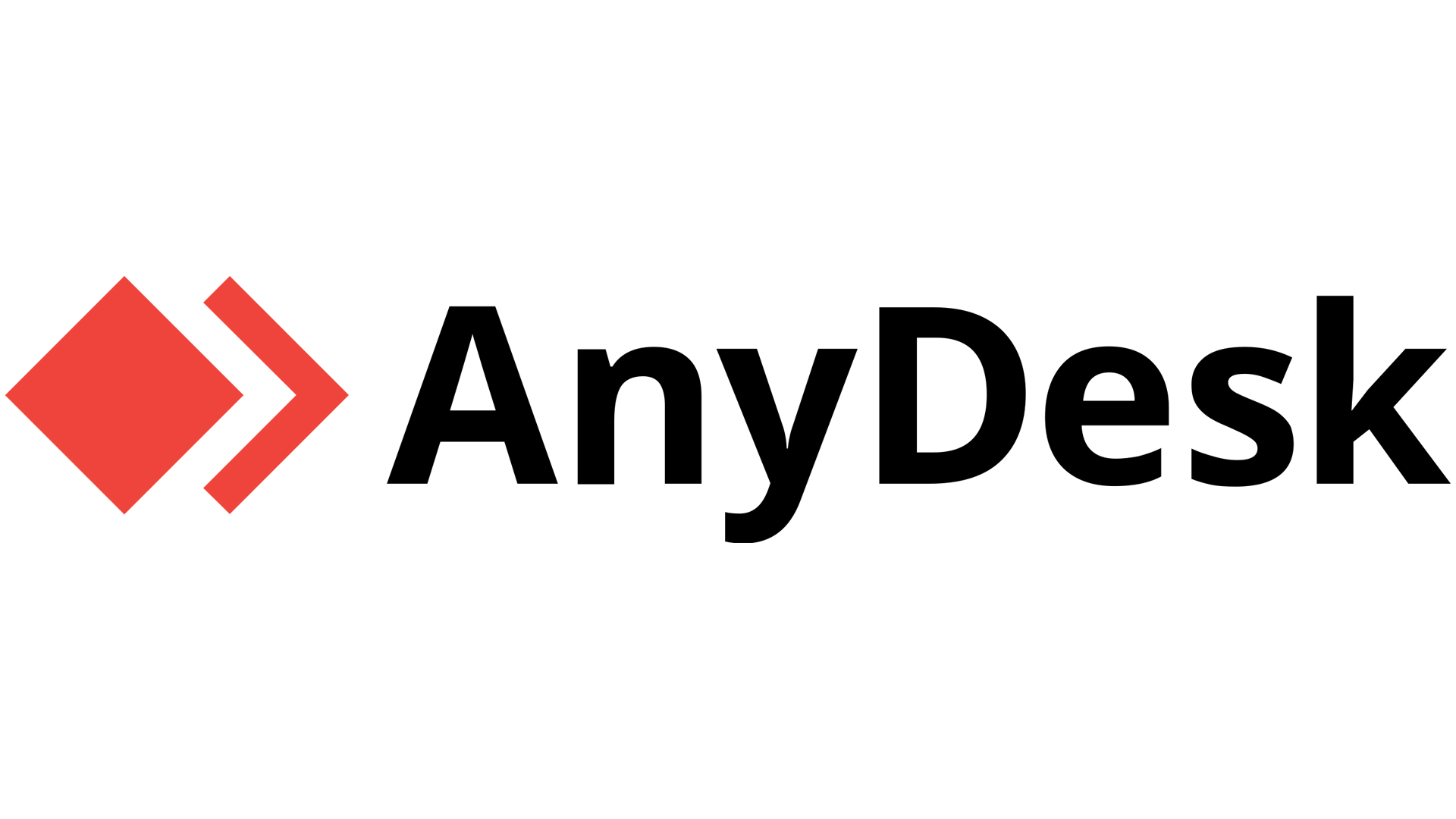
AnyDesk is affordable and easy-to-use remote desktop software. It provides the best value for individuals and small businesses that need both remote support and unattended access capabilities.
-
+
Remote support and unattended access
-
+
Inexpensive single-user business plan
-
+
Supports wake-on-LAN
-
-
Limited features for large IT teams
-
-
Email support only

AnyDesk is remote desktop software launched in 2015 that enables both attended and unattended remote access to Windows and Mac computers, as well as iOS and Android mobile devices.
In our AnyDesk review, we’ll cover everything you need to know to decide if this is the best remote desktop software for you.
AnyDesk review: Snapshot
AnyDesk is capable remote desktop software for individuals and small businesses. It enables you to remotely access an unattended computer or to provide tech support through interactive remote sessions. Collaboration tools like text chat, a built-in whiteboard, and session invitations make it especially useful for working remotely in small teams.
This remote desktop software is easy to use, particularly for non-IT professionals who only need remote access to a single computer. If you’re looking for remote desktop software for personal use, AnyDesk is free, and you can get up and running in minutes.
AnyDesk is very inexpensive compared to remote desktop software like TeamViewer, which is geared more towards enabling centralised IT support at medium and large businesses. However, if you only need unattended access to fewer than 25 computers, Zoho Assist provides similar features to AnyDesk at a fraction of the price.
Score: 4/5
Read on for our full and detailed AnyDesk review.
AnyDesk’s competitors
How does AnyDesk compare to its main competitors?
| Header Cell - Column 0 | AnyDesk | TeamViewer | Zoho Assist |
|---|---|---|---|
| Score | 4/5 | 4.5/5 | 4.5/5 |
| Pros | - Inexpensive single-user business plan - Supports wake-on-LAN | - Built-in video conferencing - Mass deployment | - Inexpensive - Simultaneous remote support sessions |
| Cons | - Expensive for large numbers of devices - Email support only | - Expensive - Cumbersome security features | - Limited to 25 computers for unattended access - No plans for individual users |
| Verdict | AnyDesk is a capable platform for individuals and small businesses. It’s easy to use and offers good collaboration and security features. | TeamViewer provides medium and large businesses with remote access to a network of many computers. | Zoho Assist offers a cheap, easy way to enable remote IT support or unattended access to up to 25 computers. |
| View deals | <a href="https://anydesk.com/">Visit site</a> | <a href="https://www.teamviewer.com/en/">Visit site</a> | <a href="https://www.zoho.com/assist/">Visit site</a> |
AnyDesk: Key features
AnyDesk offers features for both individual users who need unattended remote access to a work computer, and IT teams who need to provide remote technical support.
It enables unattended remote access to Windows and Mac computers, and to iOS and Android mobile devices. Just set up a password on the remote device, and then you can access it from an unlimited number of host devices without having to manually accept the remote session. You can also use wake-on-LAN to wake up a sleeping computer.
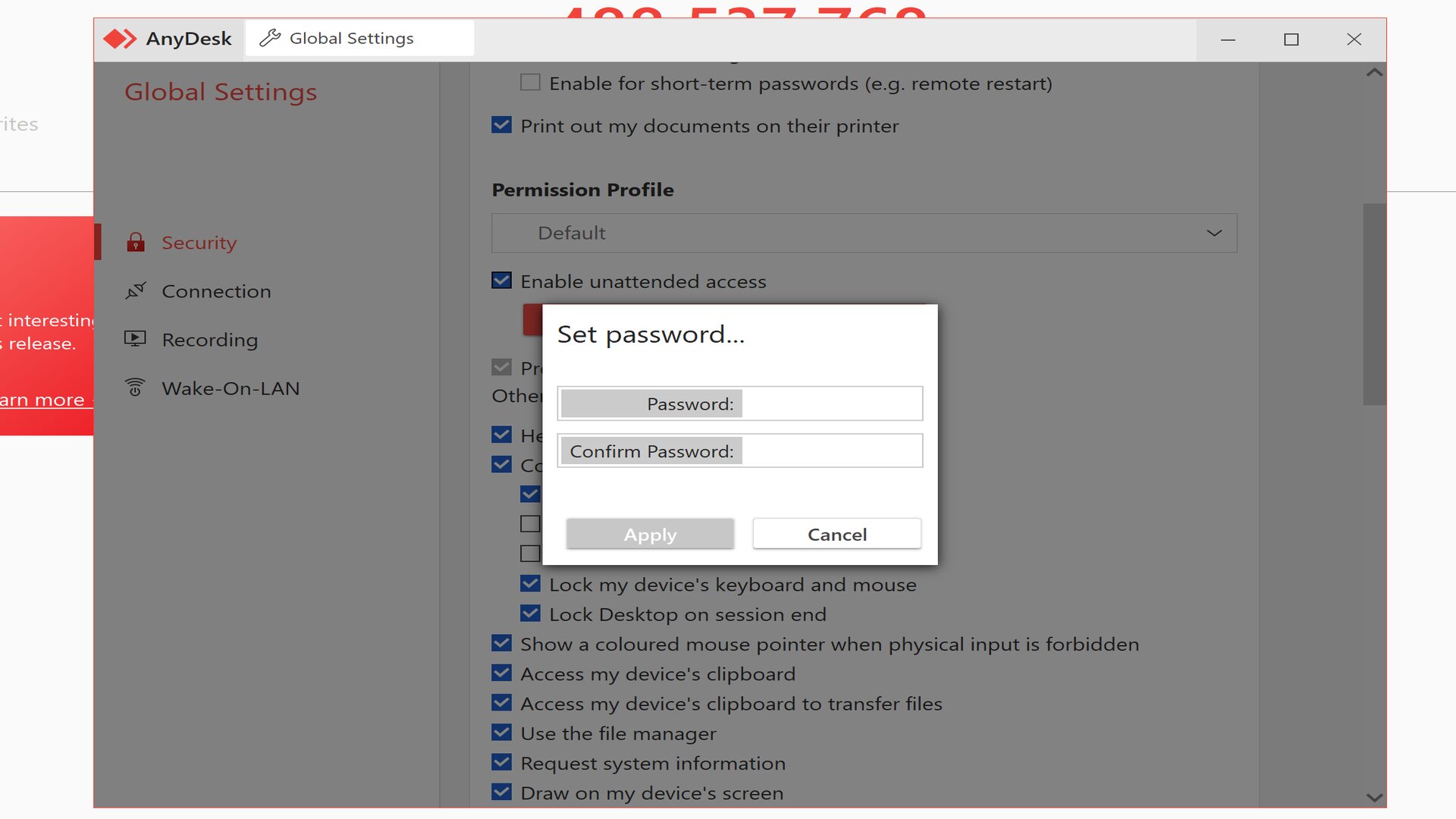
AnyDesk offers a built-in file manager to enable you to transfer files between a host and a remote computer. You can also copy and paste text or files across connected computers. However, AnyDesk doesn’t offer a sync folder or the ability to drag and drop files between devices.
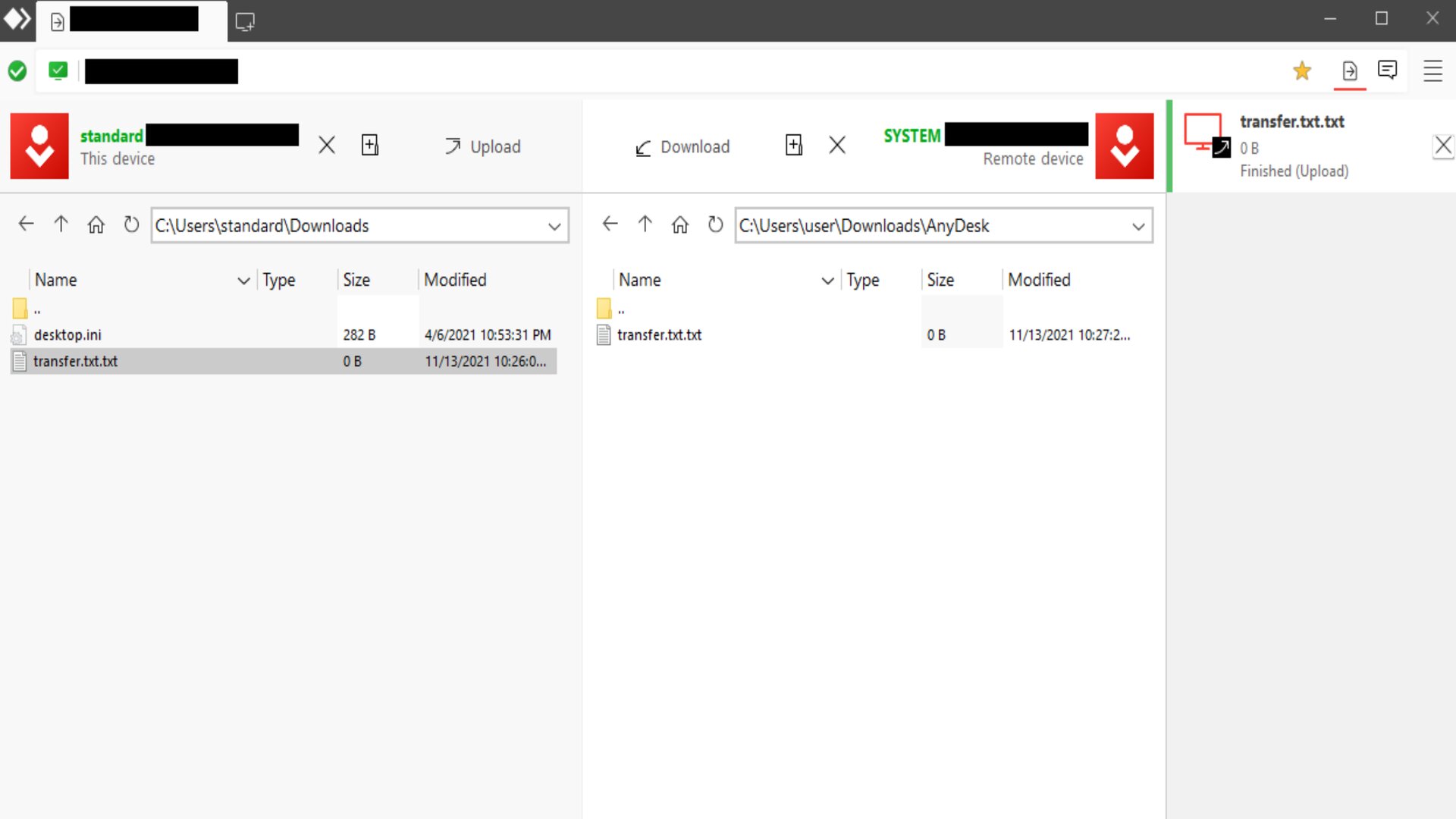
AnyDesk offers an address book to help businesses keep track of all computers for which remote access and remote support is enabled. Your address book is shared by everyone in your network, although remote users will still need a password to gain unattended access to any computer. You can organise your address book using custom tags.
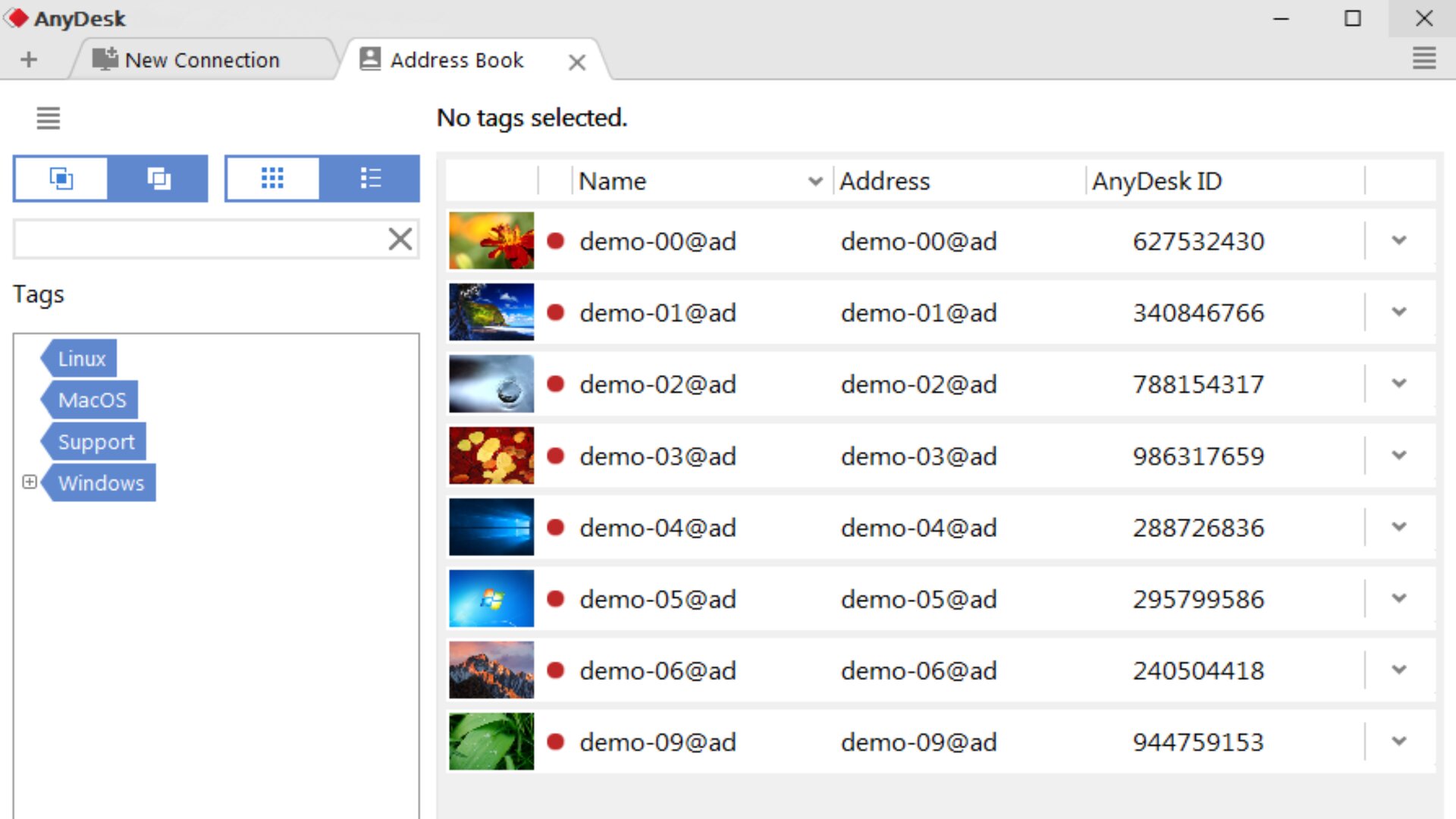
The platform also includes several tools for collaborating within remote sessions. A text chat box makes it easy to communicate for remote support. A virtual whiteboard enables you to draw on a remote screen and guide a user through actions you want them to take.
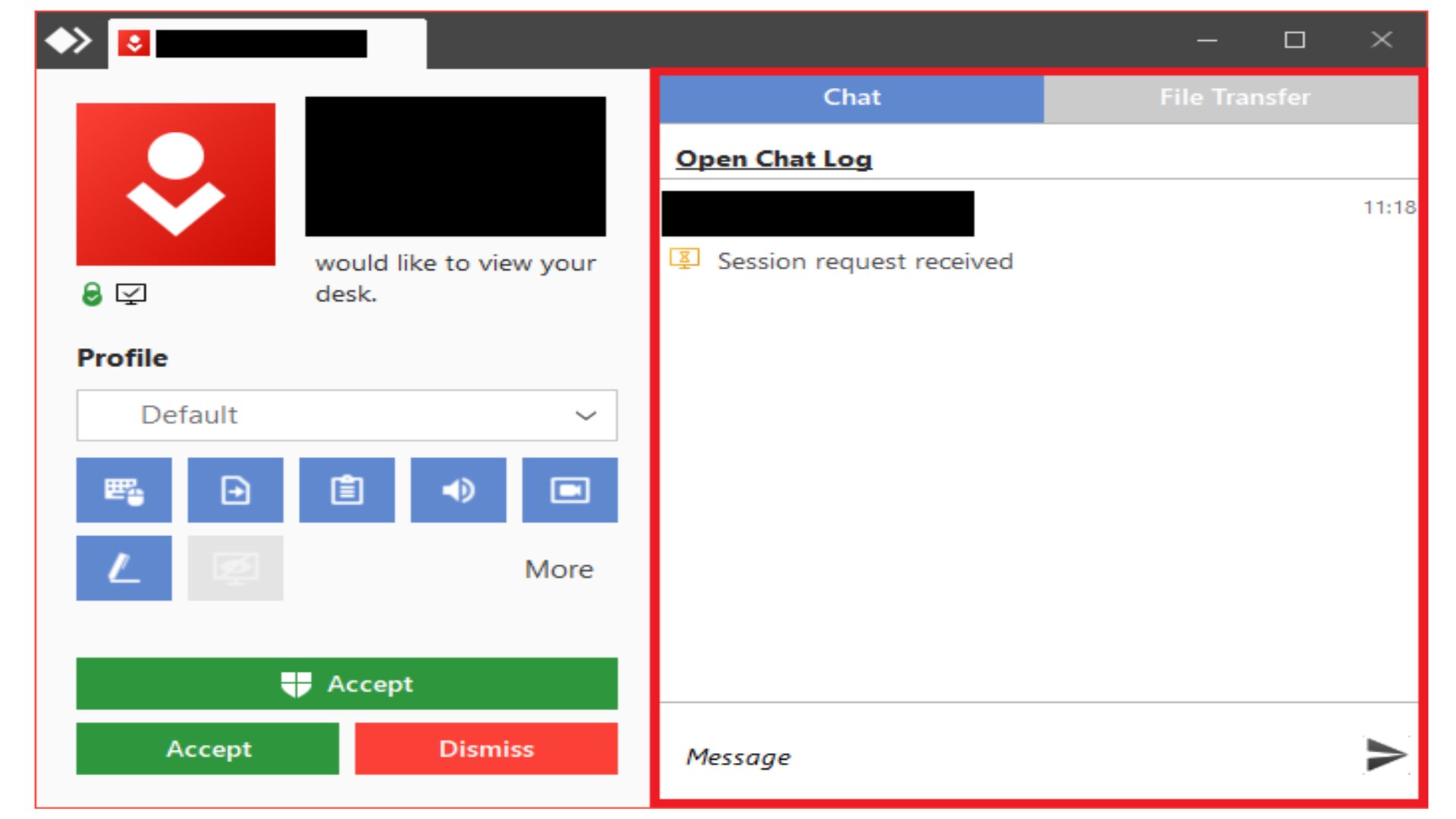
It’s also possible to invite another user on your network to take remote control of your computer, which increases efficiency for support requests.
AnyDesk uses end-to-end encryption for all remote sessions to prevent unauthorised access to your network. The software also supports 2FA, and enables you to set up a whitelist so that only specific devices can access your computer. For remote support sessions, AnyDesk enables you to limit what control features are available to remote users.
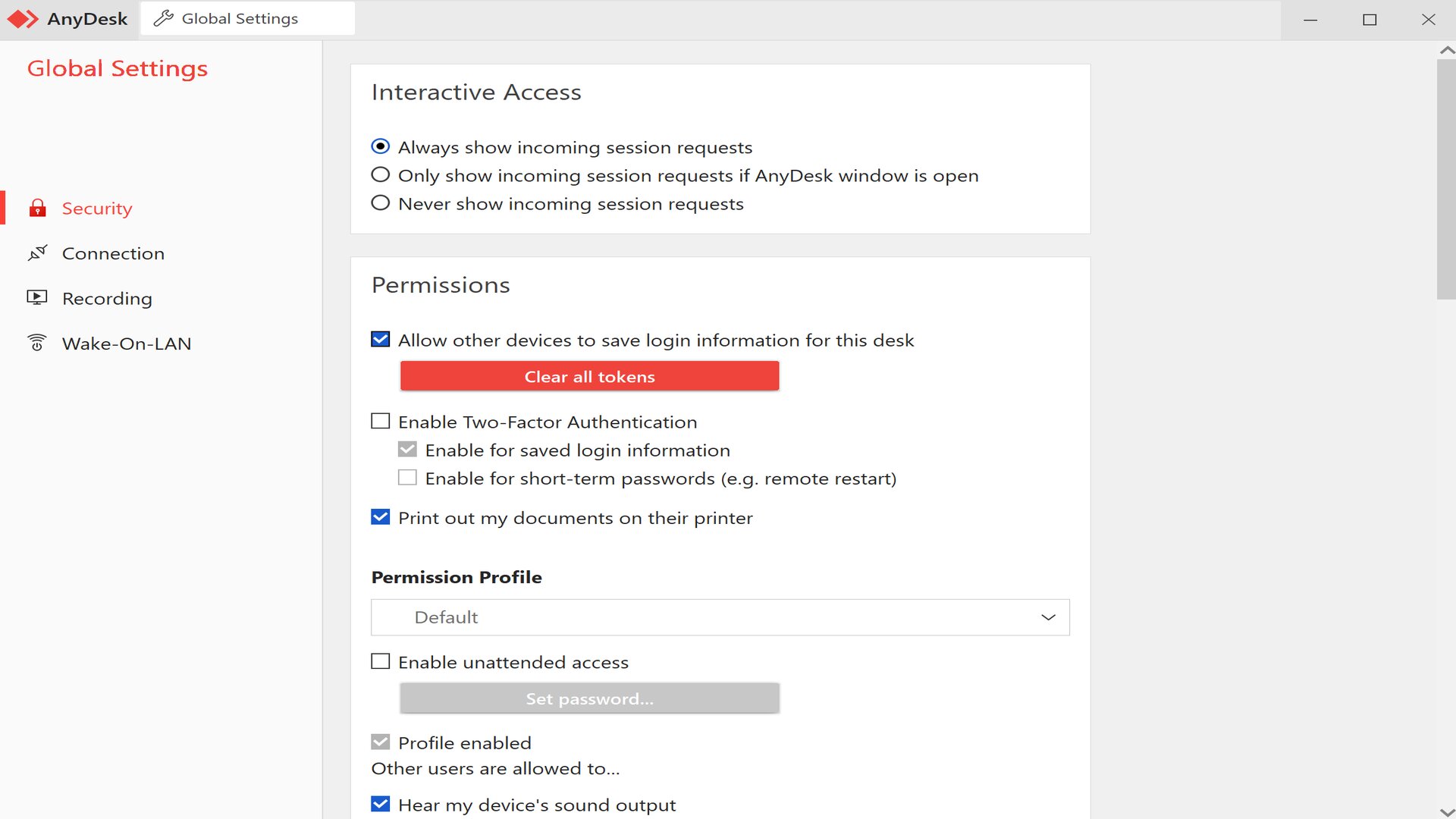
AnyDesk: What’s new in 2022?
The AnyDesk team has been busy updating its software, and in November 2021, AnyDesk released version 7 of its software.
The new platform provides a more streamlined user experience than previous iterations of AnyDesk. Now, most in-session tools, including the file manager, can be found tucked away in a toolbar instead of crowding your screen. A one-click button lets you invite anyone in your address book to start a new remote session on your computer.
AnyDesk Version 7 also enables you to define permission sets, which you can apply automatically when a new remote support session is initiated. While a remote session is active, the software displays a coloured background or box around your screen as a reminder that someone else is accessing your device.
AnyDesk: Pricing
AnyDesk offers a free plan for personal use that allows you to provide remote support for an unlimited number of computers, ranking it among the best free remote desktop software solutions. If you need unattended access, the Essentials plan costs £9.90 a month, and enables one user to manage one remote device.
Businesses can take advantage of the Performance plan for £19.90 per user a month. This plan includes three remotely-managed devices per user. Users aren’t restricted to accessing only the devices they add, but rather can access any devices on your license.
If you need more devices, AnyDesk offers an Enterprise plan starting at £29.20 a month. All plans are paid annually, and to get more information about signing up, you'll need to get in touch with AnyDesk. You can try out the Essentials or Performance plans free for 14 days.
AnyDesk’s pricing plans
| Plan type/feature | Free | Essentials | Performance | Enterprise |
|---|---|---|---|---|
| Cost per month | Free | £9.90 | £19.90 per user | £29.90 per user |
| Cost per year | Free | £118.80 | £238.80 per user | £358.80 |
| Number of users | One | One | Up to 1,000 | Unlimited |
| Number of remote devices | Unlimited (personal remote support only) | One | Three per user | Unlimited |
| Wake-on-LAN | ✖ | ✖ | ✔ | ✔ |
| Virtual whiteboard | ✔ | ✔ | ✔ | ✔ |
Testing AnyDesk
We tried out AnyDesk’s software on Windows to see how easy it is to connect remotely to other devices, both for remote support and for unattended access.
How easy is AnyDesk to use?
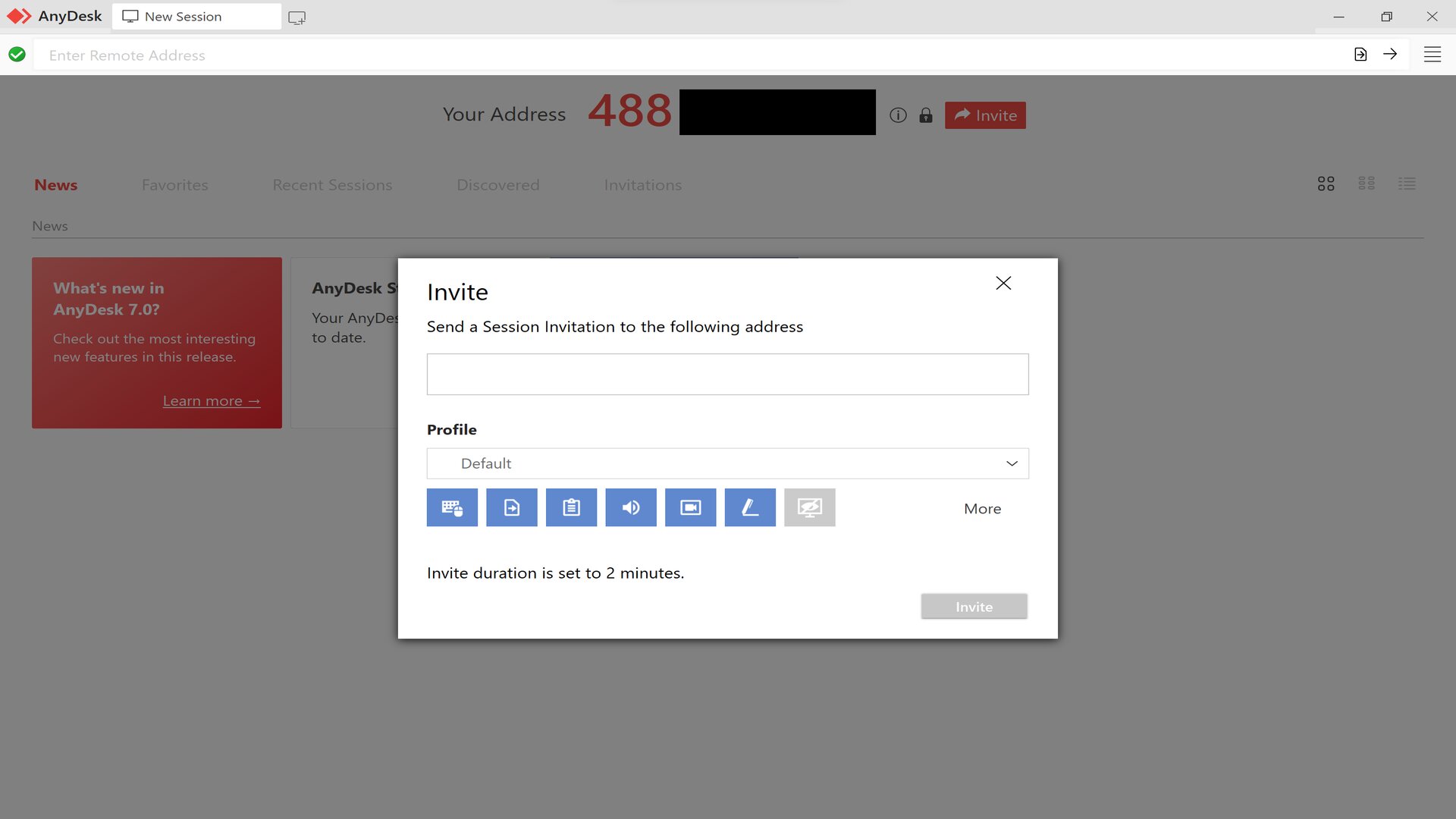
We thoroughly enjoyed the experience of using AnyDesk, and think it’s one of the most straightforward remote desktop platforms we’ve tested.
Once you install the software on your computer, it will automatically display your computer’s unique connection address. To initiate a remote support session with your computer as the host, simply give this address to a remote user, or send an invitation to any email address. You can choose from a list of permission presets to limit how much control a remote user will have over your device.
To connect to a remote device from our computer, all we had to do was enter the remote device’s unique address. The address book is integrated right into the address entry bar, making it easy to reconnect to devices that we use often.
Another thing we liked is that AnyDesk can automatically detect other AnyDesk-enabled devices in your local network. This eliminates the manual work of building your address book, and enables you to start using the software across a business within minutes.
Alternatives to AnyDesk
AnyDesk is capable software, but it’s far from the only remote desktop platform available for individuals and businesses. For medium and large businesses, TeamViewer is an alternative worth exploring.
TeamViewer is significantly more expensive than AnyDesk, with plans for businesses starting at £32.90 a month. However, TeamViewer’s Single User plan enables a single user to remotely manage up to 200 devices. The Multi User plan, which costs £61.90 a month, offers a license for 15 users to manage up to 300 devices.
TeamViewer is particularly well-suited for IT teams, both because of its one-to-many pricing plans and because of its advanced features. TeamViewer includes a command line interface in its remote sessions, and offers mass deployment, so you can seamlessly install the remote access software on hundreds of computers. These features are available for AnyDesk, but only with an Enterprise plan.
For remote support without remote access, Zoho Assist is a cheaper option than AnyDesk. Zoho’s remote support plans start at just £10 per user a month, and they don’t limit the number of computers you can access. Users can also have multiple remote support sessions open at once, which is a huge plus for busy IT technicians.
Zoho Assist does offer inexpensive unattended access plans, which start at £10 a month. You can have an unlimited number of users on a single plan, but the number of remote devices is capped at 25. Therefore, Zoho Assist can be a good option if you only need unattended remote access to a small number of devices. Otherwise, AnyDesk provides more flexibility.
AnyDesk’s features compared to the competition
| Header Cell - Column 0 | AnyDesk | TeamViewer | Zoho Assist |
|---|---|---|---|
| Unattended access | ✔ | ✔ | ✔ (up to 25 devices) |
| Unlimited users | ✖ | ✖ | ✔ |
| Support | Phone and email | Phone and email | |
| Basic plan | £9.90 a month | £32.90 a month | £10 a month |
AnyDesk: Final verdict
AnyDesk is an easy-to-use and fairly affordable remote desktop software platform for individuals and small businesses. It supports both attended and unattended remote connections across Windows, Mac, iOS, and Android devices.
The service offers several important features to make managing your remote connections easier. An integrated address book enables you to quickly connect to any device in your network, or invite another user to connect to your computer. Communication tools like text chat and an interactive whiteboard enable collaboration. If you need to transfer files between computers, AnyDesk includes a simple file manager.
In testing AnyDesk, we found that it’s very quick to get started with, and doesn’t overwhelm users with options. It’s one of the most straightforward remote desktop software platforms we’ve tested, making it a great option for non-IT professionals.
While AnyDesk has a lot to like, it doesn’t provide the features or pricing options that medium and large businesses need. For tools like mass deployment and command line control, check out TeamViewer. TeamViewer is significantly more expensive than AnyDesk, but it also enables a single technician to manage up to 200 devices.
On the other end of the spectrum, Zoho Assist is a cheaper alternative to AnyDesk for businesses that only need remote support capabilities. Zoho Assist may also present a better value than AnyDesk for businesses that need unattended remote access to fewer than 25 computers.
Further reading on remote desktops
If you're interested in finding out more about remote desktop technology and platforms, we've got a wide range of content available for your reference. Learn more about protocols such as RDP, XRDP or VNC and what TeamViewer offers; find out how to use Microsoft Remote Desktop and how to use remote desktop on Windows 10.
If you need walkthroughs for setting up remote access via Microsoft or Apple OSs, see how to use remote desktop on Mac, how to set up Chrome Remote Desktop; and how to remote desktop from Mac to Windows.
Get the ITPro daily newsletter
Sign up today and you will receive a free copy of our Future Focus 2025 report - the leading guidance on AI, cybersecurity and other IT challenges as per 700+ senior executives
Michael is a prolific author in business and B2B tech, whose articles can be found on Business Insider, Entrepreneur, TechRadar Pro, IT Pro Portal, Tom's Guide, and more, covering everything from international tech regulations to corporate finance and emerging tech brands and markets. A successful copywriter and entrepreneur, Michael has worked with dozens of SaaS and tech companies, and has his finger firmly on the pulse of B2B tech, finance and business.
-
 ‘Phishing kits are a force multiplier': Cheap cyber crime kits can be bought on the dark web for less than $25 – and experts warn it’s lowering the barrier of entry for amateur hackers
‘Phishing kits are a force multiplier': Cheap cyber crime kits can be bought on the dark web for less than $25 – and experts warn it’s lowering the barrier of entry for amateur hackersNews Research from NordVPN shows phishing kits are now widely available on the dark web and via messaging apps like Telegram, and are often selling for less than $25.
By Emma Woollacott Published
-
 Redis unveils new tools for developers working on AI applications
Redis unveils new tools for developers working on AI applicationsNews Redis has announced new tools aimed at making it easier for AI developers to build applications and optimize large language model (LLM) outputs.
By Ross Kelly Published
-
 Google layoffs continue with "hundreds" cut from Chrome, Android, and Pixel teams
Google layoffs continue with "hundreds" cut from Chrome, Android, and Pixel teamsNews The tech giant's efficiency drive enters a third year with devices teams the latest target
By Bobby Hellard Published